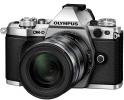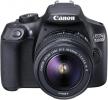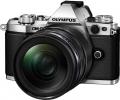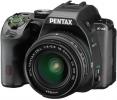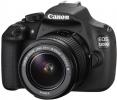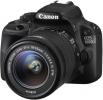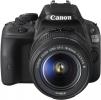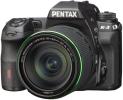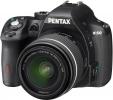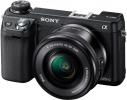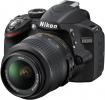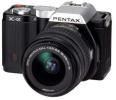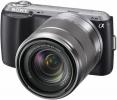Reviews related to : Digital SLR
Early digital cameras were more of a novelty than a practical replacement for a serious camera. At best suitable for holiday snaps but with quality worse than some of the cheapest film based cameras and at a price often involving an extra zero!
Despite these initial limitations, the digital camera rapidly improved - taking on good quality fim cameras and finally reaching a quality to attract professionals. In the last couple of years digital SLR (Single Lens Reflex) cameras have started to take their place among serious photographers.
While a lot of better mobile phones has decent enough cameras I still get a buzz to test out a proper interchangeable lens camera from a good manufacturer. Here is such an item from Olympus now at M5 iteration II.
The The Olympus E M5 II is not a large unit but is powerful and the images its takes are superb. As always I start in Auto mode while I familiarize myself with everything it can do.
This is a small but very power DSLR kit supplied with an 18-55mm lens. I always enjoy my testing of such items as once past the initial learning curve – when I use the Auto settings – in whatever review time remains I extend myself with the range of manual mode choices.
It is 12.5x10x14.5cm the last figure with the lens at its most compressed position, the total weight is 696grams. It is supplied with a neck strap but the normal substantial grip point on the right side I prefer to use it without it. The left side has an anchor point for the neck strap with a rubber bung covering a charge port, USB port and HDMI out socket. The right side has the pair to the neck strap anchor.
If like me you enjoy a good manual then this unit should make you happy. The manual I saw was in PDF format – sadly not something to read in the bath – and it is 156 pages with 144 pages before the safety and warranty pages, bliss.
If you purchase this unit I assume that the manual will be in print as the camera I had for just one week came without a box just the component parts in bubble wrap. While you might purchase the unit ‘body only’ I was sent an 18-135mm lens with it as the latest 155mm lens is not yet available. Certainly a unit to attach the neck strap to securely as it weighs 1140grams. It is 14.5x12x9cm with the lens collapsed and fully extended it increases the first figure the length to 20.5cm.
This is a DSLR in a body so small that you assume it isn’t. It comes with a 14-42mm lens and is smaller than even some small digital cameras, it has a neck strap it has a viewfinder and it has a flash shoe in normal conditions you might never use any of them.
The Olympus OM-D measures 12.5x7x8cm and weights 534grams. The right side has a neck strap anchor and a hinged door behind which any SD Card you use lives. The left side has the other neck strap anchor and a rubber bung over the external connectors. The back has a 6x4.
Without doubt this is a semi-professional unit and it takes images of very high quality. What is perhaps a little more surprising is that in my own bumbling way I enjoyed using it and I certainly enjoyed the results that it gave me.
The Pentax K-3 II DSLR measures 13x9.5x14cm and weights a tad over 1kilo. It was supplied with an 18-55mm lens and this fully extended added around 1.5cm to the width. This was one of the few DSLR units that I fitted with the neck strap as carrying a kilo in your hand for a long period can be somewhat tiring however when shooting at a gig where it sits on a table between shots I still prefer not to have the strap getting in the way.
Its been a while since I have been sent a camera that stretches me a little. Providing the amount of stretching is a little I like it as it stops you getting into a rut that allows the camera to make all the choices without you having to think.
The Pentax K-S2 DSLR measures 12x11x9cm and it weights 848grams (without neck strap attached). The second figure the width is achieved by the lens being locked in closed position which makes the 18 to 55mm lens smaller than it would otherwise appear, as unlocked (ready to shoot) it is at least 3cm bigger. My unit was predominately white with grey covering the entry points and buttons and viewfinder being the normal black.
This is quite a small and lightweight offering from Pentax. However this does not mean that the images its takes are anything but excellent in both JPG and RAW. The only unusual thing to me is that both the body and lens are white.
The Pentax K-S1 Digital SLR camera measures 11x9x15cm and weighs 771grams without the neck strap. The right side has a rubber bung behind which are HDMI and USB outlets, there is also a neck strap anchor point. The left side has the anchor point pair. The face is whatever lens you attach I was sent an 18-55mm offering As well as AF/MF twist control. The top has the manual rise built in flash with button on the left at the very top is an external flash shoe and below this the viewfinder.
This DSLR is only a little larger than their most powerful PowerShot unit. It is a full featured DSLR capable of capturing very good images and for those that require it also capable of capturing very good video images as well.
The Canon EOS 1200D Digital SLR Camera measures 12.5x9.5x14cm and weights 684grams without the neck strap. While you would probably attach the neck strap for those occasions when you are wandering around for hours taking images I preferred it without it when I was removing it from my bag to take images and then moving on. The hand grip on the right side is comfortable and although the scales do not lie it feels comfortable when being held.
Perhaps a strange time of year to be sent a DSLR unit with a 55-250mm lens as this requires either very large rooms or outside use to get the best from it, however so far the weather has been kind and my short time with it was productive.
The body is 10.5x9x7cm, I am mentioning things this way as not everyone will use 55mm to 250mm lens with it. Add the lens and the last figure becomes between 18cm and 22cm. The total weight is 804grams (without neck strap). As always I start with it in the easiest mode ‘Auto’ and assume that I know nothing.
It is a rare treat for me to get a DSLR unit in for review. This is one of the few occasions I can persuade Canons PR to send me one rather than their choice which is usually a pocket unit. These are still good units but for a different market.
It is 12.5x10.5x15cm with the supplied EFS 18-55mm lens attached. It weights 624grams. This is a unit suitable for those who have progressed beyond what a basic digital camera can offer. Your first job will be to get used to using a viewfinder that has almost entirely disappeared on its smaller sibling. The screen is used to display a lot of important information about the shot you are about to capture. Once captured it can still be viewed on the TFT.
The Pentax K3 is a weighty and powerful 24M pixel DSLR unit. I was sent the body and a 18-135mm lens. It went on my various journeys for several weeks, so not only did I get my normal range of test shots but some interesting Landscape offerings.
The K3 measures 13x9.5x15cm the last figure with the lens fully in, add another 6cm for fully zoomed out, surely a situation that should be used very rarely and then only when mounted on a weighty tripod. The camera and lens weight is 1250 grams. The right side has neck strap anchor point and below this a flip door that hides two SD card slots. Below this a rubberised door to take (optional) DC power.
This is quite a meaty DSLR kit unit, however for me a little spoilt by its white colour, while this may be being picky again it does draw attention to the unit and if you are taking images in a less savoury area it could mean you are targeted.
The Pentx K50 Digital SLR (DSLR) camera weighs 885grams and measures 12.5x9.5x15cm with the supplied 18-55mm lens attached. Starting with the rear the 6.2x4.5cm TFT shows what settings you have selected and after shooting using the viewfinder shows the image you have captured. Above the viewfinder is a flash shoe and also the pop up built in flash that is never nearer than 11cm from the lens. To the right of the viewfinder a control that allows you to zoom in or out of the captured image.
The Pentax Q10 is probably the smallest removable lens camera I have ever reviewed. It is smaller than most digital cameras but is still a very powerful unit that gives rather good JPG or an option to save your images in RAW format.
The Q10 measures 10x5.5x8.5cm the latter with the lens fully in, fully extended add another 2cm. It weights only 300 grams without attaching the near superfluous neck strap. It is capable of capturing a 12MP image. The lens supplied is a 5-15mm offering and while this may sound ‘tame’ compared to the more standard 18-55mm offerings it takes rather good images.
This is a small DSLR unit ideal for the amateur who enjoys their photography or for someone coming on from a Digital Camera wanting to improve. The most different thing for the latter group is that there is a viewfinder available.
It is 12x8.5x12.5cm the last figure with the 18 to 55lens fitted and fully in, fully out it extends another 3cm. It weights 618grams without the supplied neck strap. The right side has a flip door behind which are micro USB and micro HDMI connections. Both sides have anchor points for the supplied neck strap. Moving to the base the flap door has the solid battery and any SD card you might use behind it.
Having looked at numerous digital cameras, some Bridge units and only the occasional DSLR it is always nice to be stretched by one of the latter. A 300 page plus manual is always nice to digest as you try out some of the extras.
Mesuring 17x15x10cm the Pentax K-5 II will let you know this will not be light and indeed it weighs only a tad under 1200grams. The middle figure the width can increase by another 7cm when the 18-135mm lens is fully zoomed out, this is powerful.
Since reviewing The NEX5 a couple of varietys have emerged, however new cameras from Sony are not frequent so when I saw a prototype some months ago I immediately requested to review the new NEX6 when it was available.
Small enough to be a digital camera but it’s not. Small enough to fit in a pocket but it has a neck strap. It can have different lenses and mine came with a 16-50mm lens, this can also zoom to 2.8 times. Another reason why this is a DSLR – although Sony just call it an interchangeable lens camera - is that it has something most digital units do no longer have, a viewfinder.
The Nikon D3200 is the DSLR has the ability to capture the largest images, at 24mega pixel, the highest definition I have ever reviewed. Just think for a moment one tenth of the image size should be enough to print an A4 image if you use it all.
The Nikon D3200 I am looking at comes with an 18-55mm lens and, , this does come with built in flash. Quite unusually I have been able to use this for a longer than normal test period, sometimes this is because the company need it back to go to another journalist or other companies have sent me cameras and either way on this occasion I was able to test and retest under a range of conditions.
It seems a long time since I have been able to enjoy the extras of a DSLR camera. So the arrival of this Pentax offering that I first saw at a London launch last autumn was an eagerly and long awaited event to savour.
The Pentax K-01 compact system camera weights 765grams and is 12x8x14cm the last figure varies according to how much the lens is extended. I was sent the 18-55 option. As this unit does not have a mirror what the TFT sees is what you capture via the lens. Without the lens being considered it is a very ‘boxy’ unit. I remember at the initial launch taking images and then thinking where does the SD card go as it’s not in the battery bay.
I recently spent a couple of hours at the Broadcast Video exhibition, a great deal of what was on show was very expensive Broadcast equipment but then some stands had almost the opposite. I know Manfrotto for various photographic accessories. I have reviewed portable flash units, tripods and monopods, here something different.
Walking by their stand I saw a clothing rail with a several reinforced jackets and for want of a better word waistcoats – jackets without sleeves – all seemed to be toughened with Kevlar. I asked surely you are not producing these for war zones, I was told no just for normal photographer use. I know some fashion shoots can get tough and of course those photographing Celebes must expect the odd bodyguard to get a bit physical.
The Sony NEXC3KB is described as an Interchangeable Lens Digital Camera, what a lot of people would call a DSLR, it is small and easy to use but still has most of the ability you would expect from a DSLR unit, meaning excellent images.
Before I go on to describe this rather neat small unit there is one thing that dissuade some from buying it. While it can capture both RAW and JPG images (at the same time should you wish) it does not have any 4:3 options. Your choices in a range of capture sizes are either 16:9 or 3:2 so should you want to print an A4 image you will need to think before you capture about how you frame your shot.

